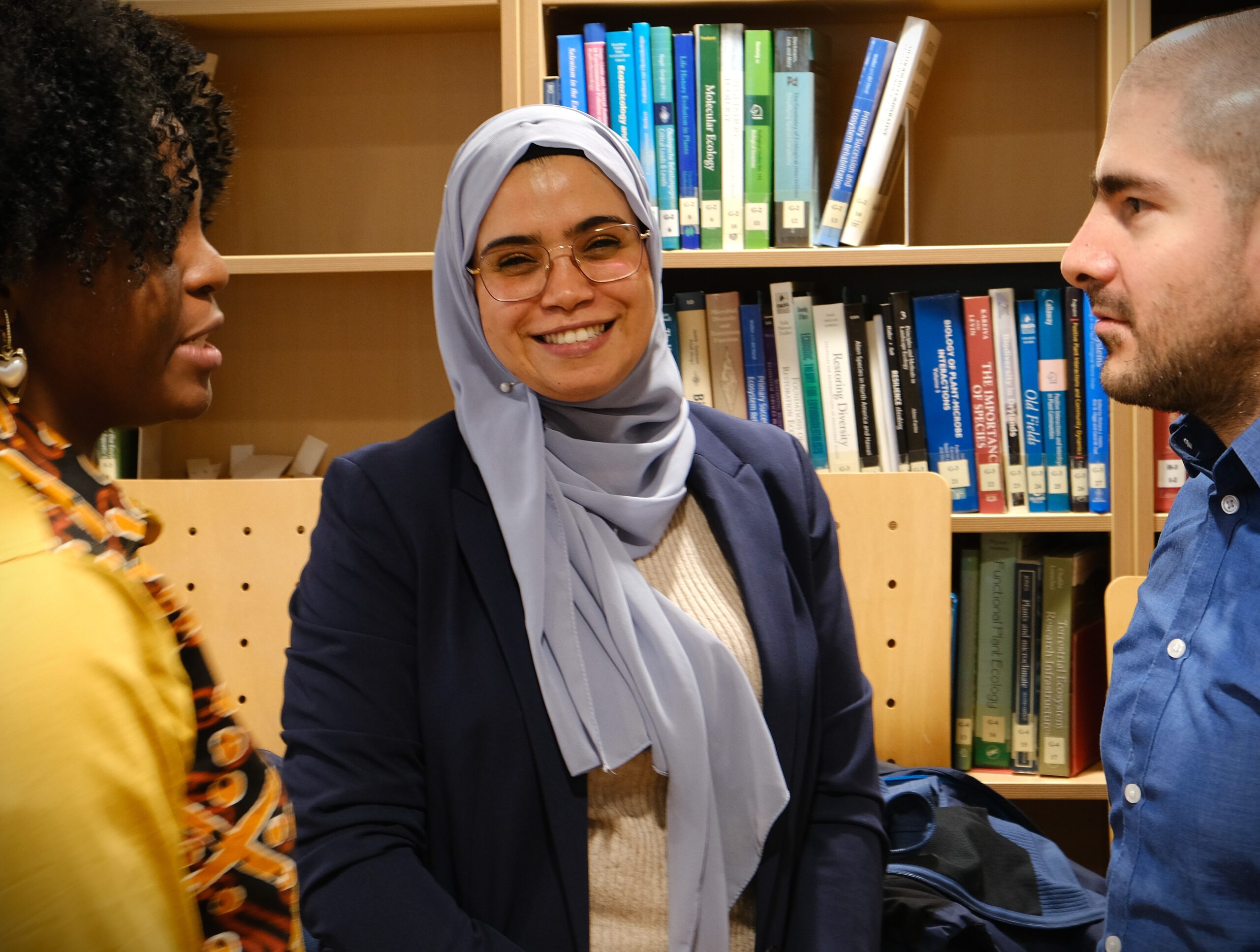Interview with Networking Manager Jihène Jerbi
- News
- -
- Interview with Networking Manager Jihène Jerbi

Five questions with…
… Dr. Jihène Jerbi, Science Networking Manager at Modellfabrik Papier
She studied quantum physics and is an expert in computational chemistry. Today, she coordinates the collaboration between research teams in the Modellfabrik Papier research cluster. As networking manager, Dr. Jihène Jerbi is responsible for innovation scouting in science and research and explores the application of computer-aided chemistry in paper technology research. In this interview, she explains why cooperation and the contribution of external expertise are key to successful research work.
Hello Jihène, how many people are actually involved in the Model Factory Paper research network?
Jihène Jerbi: (smiles) We actually get that question a lot. There are currently 24 employees at the gGmbH itself. If you add the research teams of our scientific partners who are participating in our FOMOP and FOREST projects, we easily account for around 50 people. And then, of course, there are the experts from our partner companies. So it is fair to say that our network is constantly growing – and with it the diversity of ideas and perspectives.
What exactly is your job as a networking manager?
I think of my role as that of a bridge builder. My job is to bring together the right skills, promote excellence and actively shape knowledge transfer. In a nutshell, this means that I coordinate cooperation between the research teams, establish contacts and bring our scientists together with researchers from various fields of paper and process engineering from all over the world. I also support the further development of our research programme and organise internal and external scientific events for this purpose.
A good example was our first European symposium with the accompanying ideation workshop last month. The topic was our research area ‘Tailor-made raw materials for energy savings in the manufacturing process’. Exciting new research questions have emerged – proof that innovation does not happen behind closed doors, but through interdisciplinary collaboration.
That is why we at the Modellfabrik Papier focus on an open innovation approach: Truly radical new ideas spring from bringing together the perspectives and expertise of many players at European and international level.
You have a PhD in quantum physics – how did you get into paper research?
To be honest, it wasn’t planned (laughs). I was looking for a job and came across the vacancy at the Modellfabrik Papier – ‘paper chemistry’ was completely new terrain for me. So I sought out topics that were more familiar to me and came across approaches to computational chemistry in the paper industry. During my interview with Peter, our managing director, I spontaneously said, ‘That could also be investigated using computer-assisted chemistry.’ Later, he told me that it was precisely this idea – thinking outside the box – that was one of the reasons he hired me.
Shortly after that, I presented the idea and its advantages for paper research at the ‘Science Flash’ event at ZellchemingExpo, the industry gathering for the paper and supplier industry, and won the first prize for it. That was a great motivation for me to pursue the topic further.
What exactly is computational chemistry – and how could it benefit paper research?
In computational chemistry, we simulate chemical processes at the atomic level. This is particularly interesting for paper production because many key processes – such as the interactions between fibres, binders or additives – take place at the molecular level. With such simulations, we can better understand processes and improve them in a targeted manner before testing them in the laboratory or in production. This saves resources and opens up completely new avenues for sustainable solutions.
Read more in our blog article: „What is Computational Chemistry?“
You’re always to be seen with a pen and notebook. How does your love of paper fit in with being a high-tech scientist?
Unlike digital technologies, paper is tangible: I like holding a book in my hands, taking notes in a journal or drawing on high-quality paper. At the same time, I am impressed by the complex processes behind its production. I am fascinated by the interplay: how sophisticated scientific methods and modern technologies can help to make paper production more sustainable step by step, further develop paper products and, at the same time, drive bioeconomy and circular economy. For me, this makes paper a unique material that is fit for the future.
Thank you very much for talking to us.
Discover more news
Do you have any questions?
Feel free to contact us if you would like to find out more about Modellfabrik Papier, our tasks and our projects.
Discover more news
Learn more about us
Do you have any questions?
Feel free to contact us if you would like to find out more about Modellfabrik Papier, our tasks and our projects.